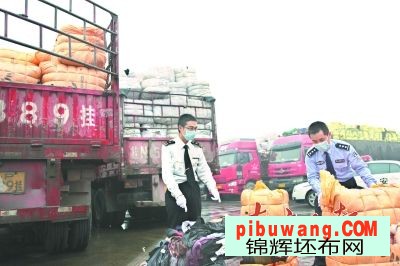对此,检验检疫部门建议,生产企业需对原辅料供应链进行严格管理,与供应商明确相关要求,及时按照欧盟新规调整产品标识,避免因出口产品标签不达标而导致通报、退运、索赔等,确保纺织服装产品顺利出口。
中国坯布网提示:希望纺织外贸出口企业提前做好准备,不要临时抱佛脚,影响到企业的利益。下面是欧盟将于5月8日起纺织品标签的新法规的英文概述仅供参考:
Background
Since both the Fibre Composition Labelling and Fibre Composition Directives have been amended a number of times, the new regulation combines all the amendments and framework legislation into a single document. As a result of this new legislation, Directives 73/44/EEC (Ternary Fibre Mixtures), 96/73/EC (Binary Fibre Mixtures) and 2008/121/EC (labelling) are repealed. The new Regulation comes into effect on 8 May 2012. Any textile products coming onto the market after 8 May 2012 will have to comply with the new regulation. Goods on the market before 8 May 2012 and not compliant with the new regulation may continue to be made available on the market until 9 November 2014.
Summary of Requirements
Non-textile parts of animal origin: Article 12 in the new regulation includes a significant change with regard to labelling of textile products containing non-textile parts of animal origin. The presence of these parts is required to be marked as“Contains non-textile parts of animal origin” on the labelling or marking of products containing such parts whenever they are made available on the market. Obvious items falling under this remit are leather and real fur. The reasoning behind this change is that consumers will then know, for example, if items contain real fur or faux fur.
Language for labelling or marking: Article 16 Paragraph 3 underlines the fact that unless a member state provides otherwise: “The labelling or marking shall be provided in the official language or languages of the Member State of the territory of which the products are made available to the consumer.”
Visibility of labelling: Also in Article 16 regarding the use of textile fibre names, the new regulation recognises that the information regarding labelling must be clearly visible where the product is made available on the market. This has always been the case, but the new regulation now includes purchasing by electronic means, such as via the internet, so the fibre content must be visible in these circumstances.
Other points of note are as follows:
• Fibre content labelling: The new labelling legislation has removed a reference from the previous directive requiring mandatory labelling for fibre composition of warm linings of gloves, mitts, and mittens that comprise 80% by weight of the complete article.
• New fibre names: A new procedure has been added into the new regulation regarding the process for adding a new fibre name into the list of allowed designations in Annex 1 of the new regulation.
• Mandatory labelling or marking exemptions: There are changes to the list of textile products that cannot be made subject to mandatory labelling or marking. In particular, felts and felt hats have been removed from the list of items not subject to mandatory labelling, so they now require to be labelled with regard to fibre content.
• Modified descriptions: Some other products in Annex 111 of the old legislation regarding this issue of exemption (now Annex V in the new legislation) have their descriptions modified, eg what was “Containers which are soft and without foundation – Saddlery of Textile Materials” has now changed to “Fancy goods and saddlery of Textile Materials.”
• Expansion of items in Annex Vll: The new regulation contains an Annex Vll that tabulates components of products that do not need to be taken into account for the determination of fibre composition. Although there was a similar piece of information in the text of the old labelling directive, the new regulation, in addition to the tabulation aspect, now has been expanded to include items not contained within the previous directive.
Note: New items listed under Annex Vll include both socks and tights. For socks, under the new regulation, additional elastic yarns used in the cuff, and stiffening and reinforcing yarns used in the toe and heel can be excluded from fibre content determination. In the case of tights, additional elastic yarns used in the belt, and stiffening yarns and reinforcement yarns used in the toe and heel also can be excluded from the determination of fibre composition.
• Items to be addressed: There is also a requirement in Article 24 of the new regulation for the EU Commission to report to the EU Parliament by the 30th of September 2013 on the following issues:
o Origin Marking
o A harmonised EU wide care-code labelling system
o An EU wide uniform code for sizing of garments
o An indication of allergenic substances
o Electronic labelling and other new technologies, and the use of language independent symbols or codes for the identification of fibres.
Please note: The above information is only a high-level summary of 64 pages of European legislation. Full detail can only be found by an in-depth examination of the new regulation.
欧盟2012纺织品标签的新法规:欧盟将于5月8日起正式实施关于纺织品标签的新法规。根据新法规要求,纺织产品的标签须注明原产国,如果产品有包装,应在包装上注明;显示产品原产地的其他商业单证不能作为标签的替代;一件纺织品的纺纱、织造、整理或者缝制几个制造过程中至少有两个环节在欧盟生产,才被视为是原产于欧盟国家的纺织品;纺织品标签必须清楚显示是否含有如毛皮和皮革源自动物的非纺织品部分,如从第三国进口的产品,应强制规定附有原产标签。



